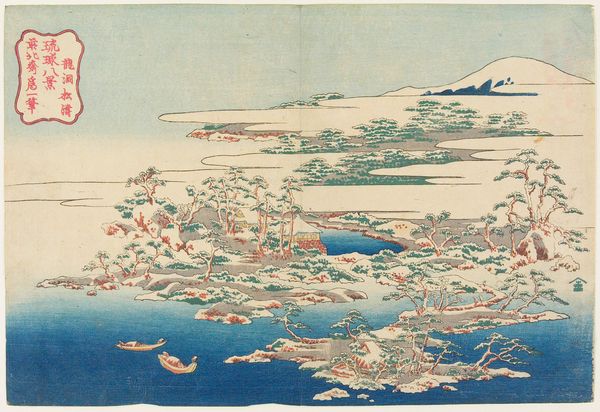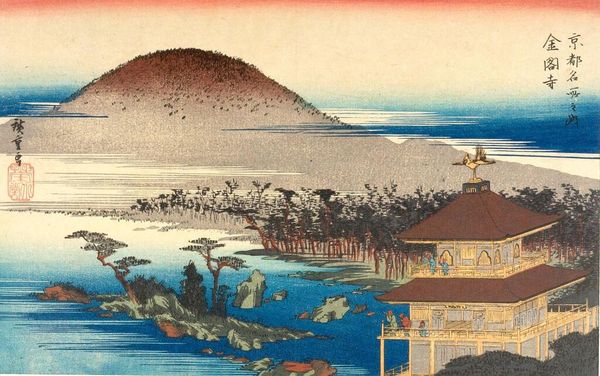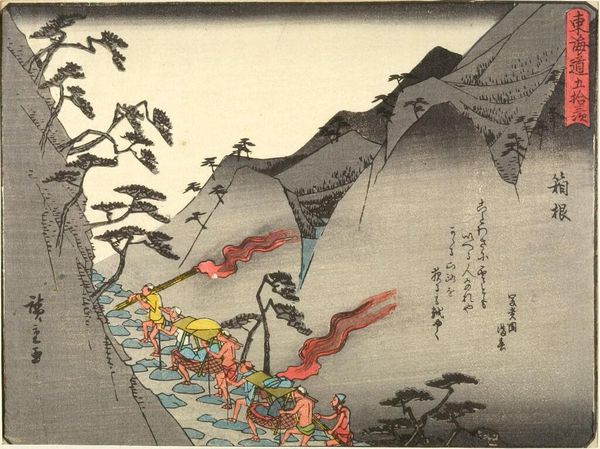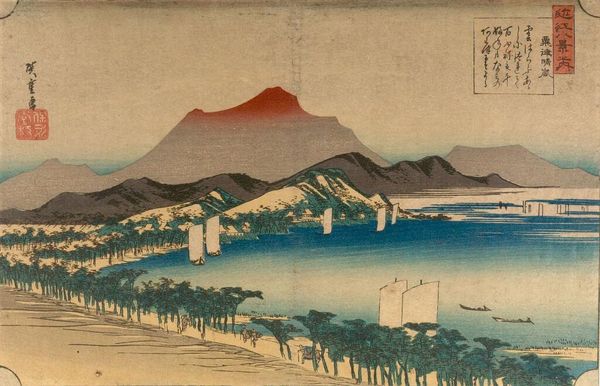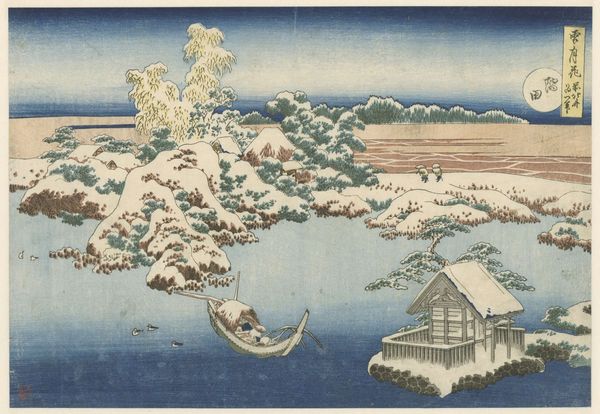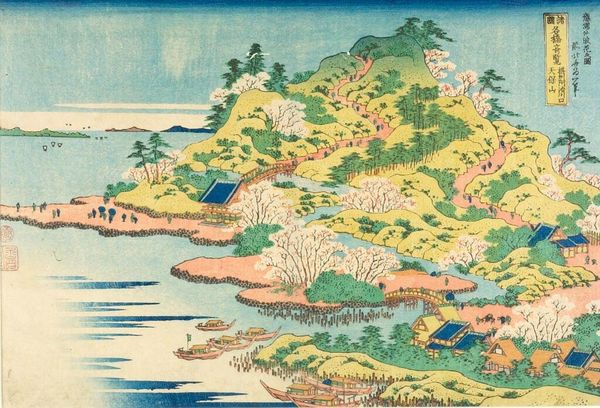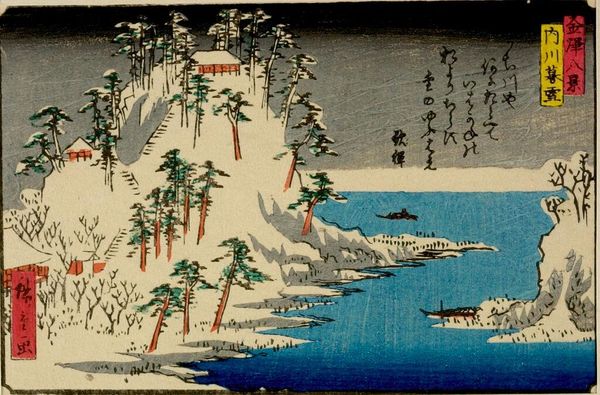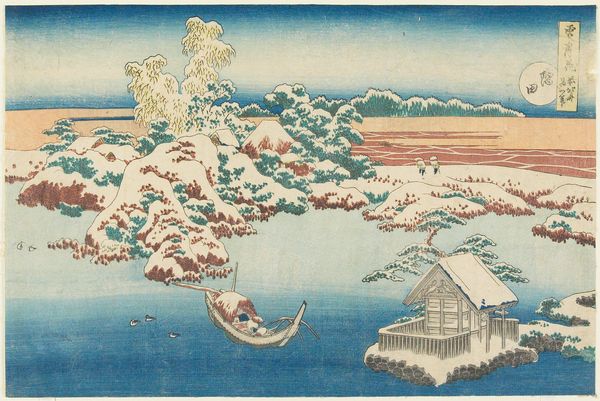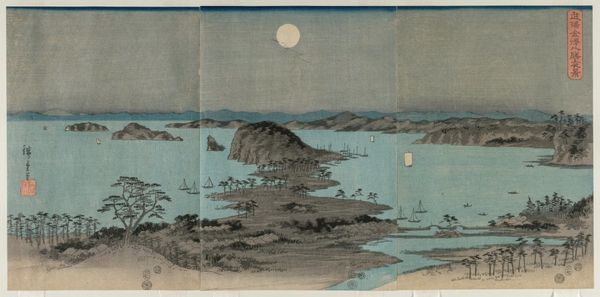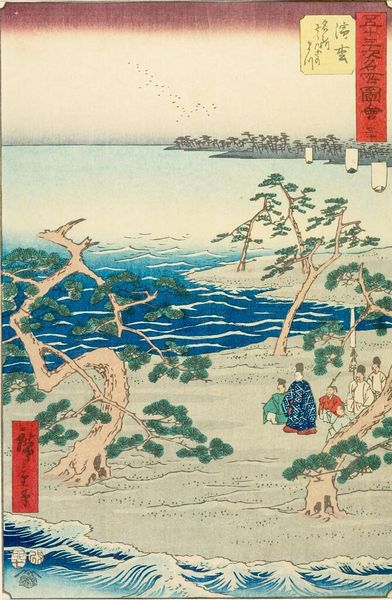
Pines and Waves at the Dragon Cavern (RyÅ«dÅ shÅtÅ), from the series Eight Views of the RyÅ«kyÅ« Islands (RyÅ«kyÅ« hakkei) c. 1832
0:00
0:00
Dimensions: horizontal Åban: H. 25.9 Ã W. 38 cm (10 3/16 Ã 14 15/16 in.)
Copyright: CC0 1.0
Curator: Looking at Hokusai's woodblock print, "Pines and Waves at the Dragon Cavern," part of his series "Eight Views of the Ryukyu Islands," one is immediately struck by the delicate balance between land and sea. Editor: Indeed, the muted palette lends a dreamlike quality, but what resonates most is the palpable sense of tranquility. The boats in the foreground bring a human element into the island's quietude. Curator: The dragon cavern itself likely holds symbolic significance, perhaps referencing local folklore or spiritual beliefs tied to the Ryukyu Islands. The pine trees, too, are a powerful symbol. Editor: Absolutely. Considering the historical context, prints like these fostered a sense of cultural connection between mainland Japan and the Ryukyu Kingdom, though often tinged with political undertones. It's a romanticized depiction, but one that undoubtedly shaped perceptions. Curator: It's a window into a specific time, showcasing nature's symbolic power and the complexities of cultural exchange. Editor: And one that reminds us of the enduring role of art in shaping our understanding of place and identity.
Comments
No comments
Be the first to comment and join the conversation on the ultimate creative platform.
